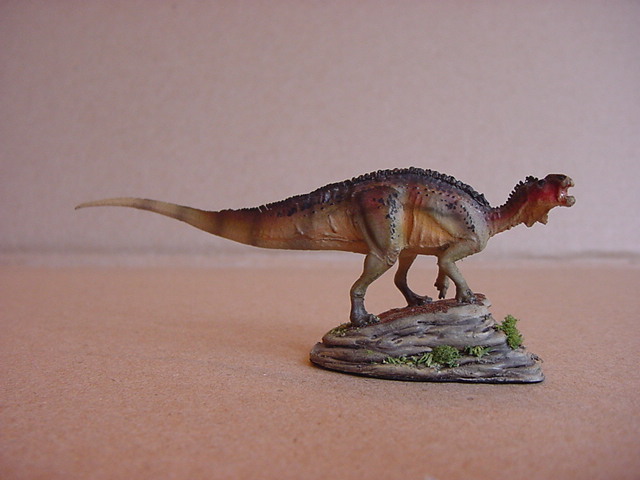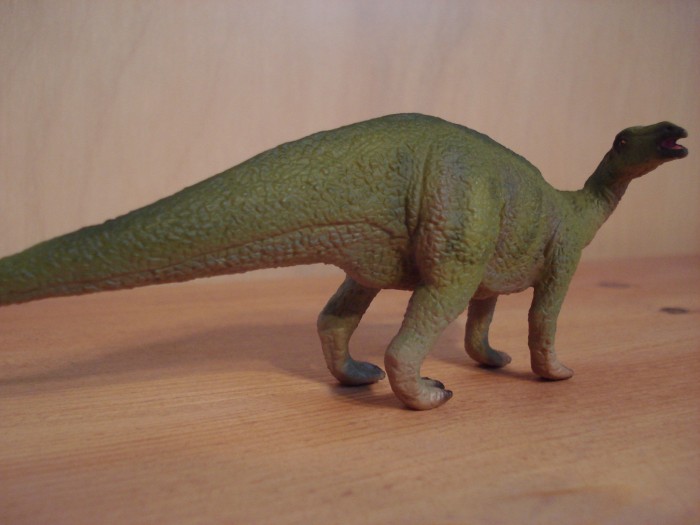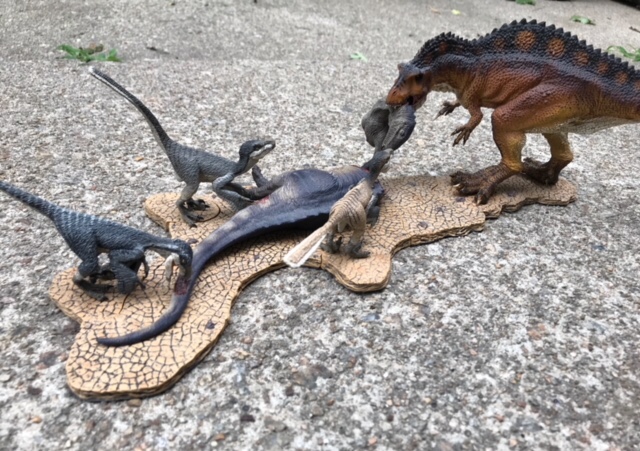Review and photos by Apatosaurus3232, edited by Suspsy
It’s been awhile since a Rebor product was reviewed on the blog. So this will be a two-part review of the Ceryneian Hind (Tenontosaurus tilletti) and Cerberus Clan (Deinonychus antirrhopus).
All Tenontosaurus Reviews
Review: Tenontosaurus (Antediluvia Collection)(David Krentz)

4.3 (6 votes)
The grand history of paleontology puts quite a bit of emphasis on Iguanodon. As a child, I could never understand why people failed to recognize this dinosaur, especially when all the books lavished it with so much attention. It was almost as though they weren’t reading the books at all.
Review: Tenontosaurus (Collecta/Procon)

2.6 (15 votes)
Review and photos by Griffin
Tenontosaurus was an Iguanodontid ornithopod dinosaur that lived in the Western United States during the early Cretacious period. In life it would have co-existed with dinosaurs like Iguanodon, Dienonychus, Utahraptor and Acrocanthosaurus. Thanks to a Tenontosaurus skeleton discovered with Dienonychus chew marks on its bones in addition to Dienonychus skeletons nearby, the idea of pack-hunting Dromaeosaurs is now widely accepted. Unfortunately this has also lead to the image of poor Tenontosaurus to ALWAYS be the prey item for Deinonychus. (Seriously, google image search “Tenontosaurus”. Like 80% of the images that pop up will be of it being attacked and/or eaten by the Deinonychus.) Medullary bone tissue, which is used by modern birds for laying eggs, has also been found on the bones of Tenontosaurus fossils.
Tenontosaurus was an Iguanodontid ornithopod dinosaur that lived in the Western United States during the early Cretacious period. In life it would have co-existed with dinosaurs like Iguanodon, Dienonychus, Utahraptor and Acrocanthosaurus. Thanks to a Tenontosaurus skeleton discovered with Dienonychus chew marks on its bones in addition to Dienonychus skeletons nearby, the idea of pack-hunting Dromaeosaurs is now widely accepted. Unfortunately this has also lead to the image of poor Tenontosaurus to ALWAYS be the prey item for Deinonychus. (Seriously, google image search “Tenontosaurus”. Like 80% of the images that pop up will be of it being attacked and/or eaten by the Deinonychus.) Medullary bone tissue, which is used by modern birds for laying eggs, has also been found on the bones of Tenontosaurus fossils.




